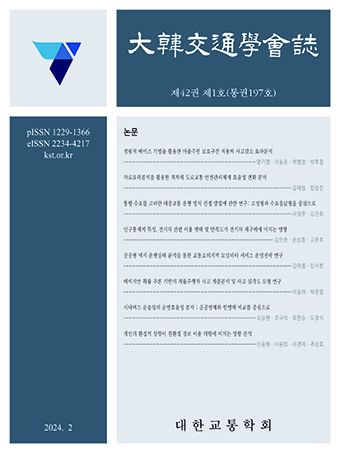Article
Abstract
References
Information
Forsey D., Habib K. N., Miller E. J., Shalaby A. (2013), Evaluating the Impacts of a New Transit System on Commuting Mode Choice using a GEV Model Estimated to Revealed Preference Data: A Case Study of the VIVA System in York Region, Ontario, Transportation Research Part A: Policy and Practice, 50, 1-14.
10.1016/j.tra.2013.01.033- Publisher :Korean Society of Transportation
- Publisher(Ko) :대한교통학회
- Journal Title :Journal of Korean Society of Transportation
- Journal Title(Ko) :대한교통학회지
- Volume : 38
- No :5
- Pages :346-360
- Received Date : 2020-01-09
- Revised Date : 2020-02-18
- Accepted Date : 2020-09-08
- DOI :https://doi.org/10.7470/jkst.2020.38.5.346



 Journal of Korean Society of Transportation
Journal of Korean Society of Transportation







